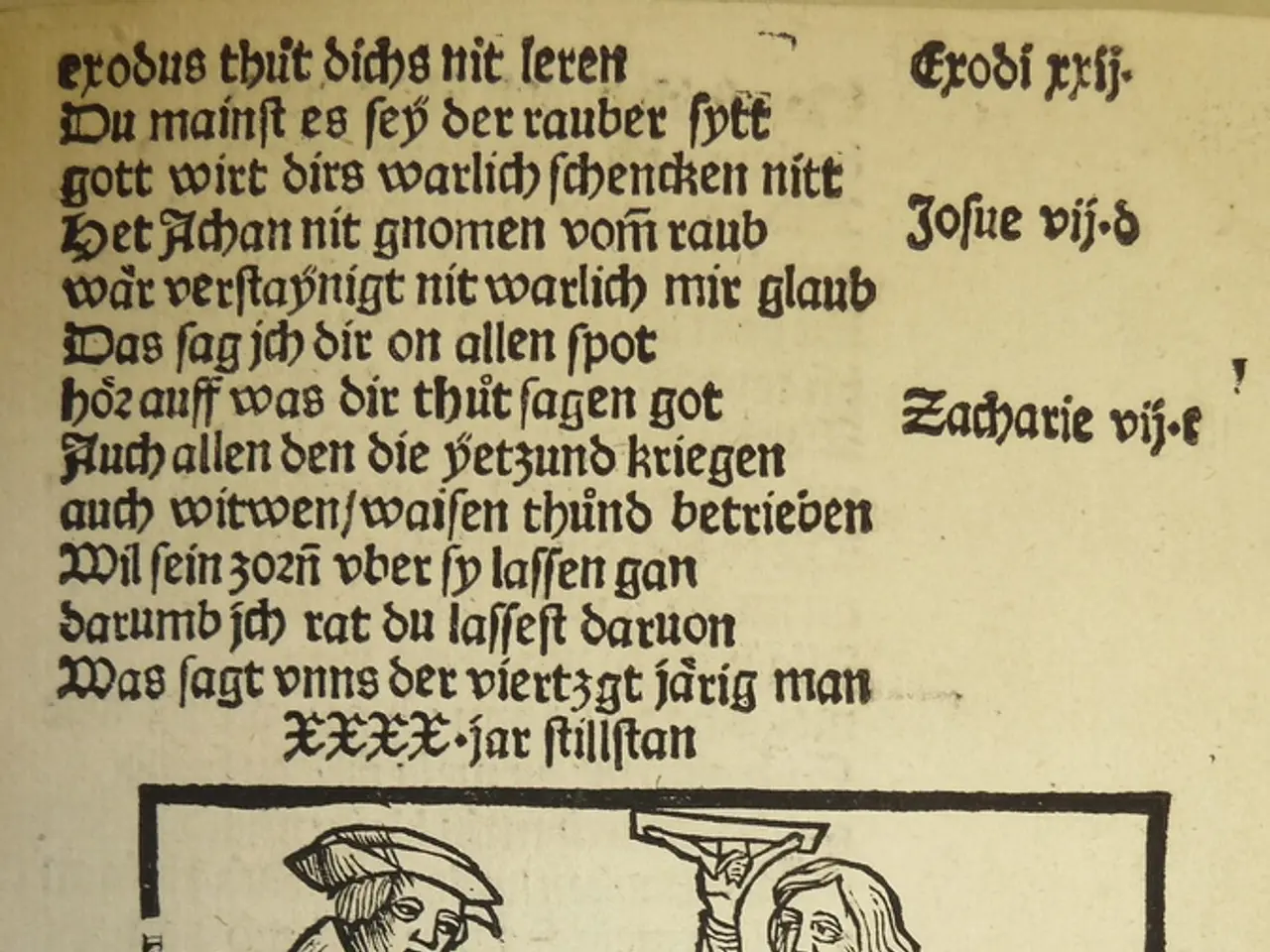Understanding a Plagiarism Report and Dealing with Potential Issues in Your Work's Content Integrity
In the digital age, an online plagiarism checker has become a vital step before submitting any research paper, PhD thesis, or journal manuscript. One such platform offers a wide range of resources to help authors ensure their work is original and properly cited.
Understanding Plagiarism Reports
The plagiarism report provided by the platform includes a similarity score and details under the "Match Groups" section. These details point out what the issue is so it can be addressed effectively. The report's colour-coded results - red, orange, yellow, and green - each have a specific meaning.
Dealing with Flagged Content
To properly address red flags in a plagiarism report, follow these recommended steps:
- Review the Report: Carefully examine the report to understand the nature of the flagged content. Look for exact matches, paraphrased content, missing citations, or improper quotation use as these commonly trigger red flags.
- Assess the Content: Verify if the highlighted matches legitimately constitute plagiarism by checking if proper citations were omitted or if original work was used without acknowledgment.
- Consult Institutional Policies: Confirm compliance with institutional policies or guidelines on plagiarism. This may involve the academic integrity officer or designated graduate officer performing an anonymous review to ensure fairness and consistency.
- Educate the Author: If misconduct is indicated, educate the student or author on proper citation practices and plagiarism avoidance. This can include demonstrating correct referencing methods, mixed citation styles, and providing examples of acceptable paraphrasing and quotation.
- Investigate Further: If suspicion remains, consider additional investigative actions such as comparing the submission to the author’s prior work, checking for inconsistencies in writing style or content understanding, and possibly using AI detection tools to identify potential AI-generated text.
- Promote Transparency: Encourage and promote transparency by allowing declaration of sources, including AI tools where permitted, and fostering an environment of integrity through clear syllabus statements and teaching ethical writing.
Additional Features
The platform offers several tools to assist authors in creating original, well-written, and properly cited work. These include:
- AI Paraphrasing Tool: This tool can be used to add variety to writing, improve fluency, and simplify language for readability.
- AI Citation Generator: The Cite tool creates citations and references lists in various styles and inserts them in the document.
- Word Count Reducer: The built-in word count reducer offers flexibility to shorten the length of a document.
- Tone Changer: This feature allows you to adjust writing tone based on content and audience type.
- Writing Toolkit: The AI writing toolkit provides 5 distinct writing tones to choose from.
- Language and Grammar Checks: The Edit feature offers language and grammar checks to polish writing.
- Free Academic Translations: The platform offers free academic translations to help authors reach a wider audience.
- Rewriting Support: The platform provides rewriting support to help authors paraphrase their work effectively.
- Grammar Checks: The platform offers grammar checks to ensure your writing is error-free.
- Vocabulary Suggestions: The platform provides vocabulary suggestions to help authors expand their writing style.
- Generative AI Assistance: The platform offers generative AI assistance to help authors write more efficiently and effectively.
By systematically analyzing plagiarism reports, verifying the legitimacy of flagged content, educating authors, and applying institutional protocols, red flags in plagiarism reports can be properly addressed and resolved. This approach combines technical evaluation of plagiarism software output with human judgment and educational measures recommended in recent research and institutional guidelines.
The platform's premium features, including consistency, plagiarism, and 30+ submission readiness checks, are available starting at US$25 a month (upgrade to our platform Prime). With these tools and resources, authors can submit their work with confidence, knowing it is original, well-written, and properly cited.
- To ensure submission readiness, authors can use an online plagiarism checker for their research paper, PhD thesis, or journal manuscript.
- After receiving the plagiarism report, authors can understand the nature of the flagged content and legitimately identify issues like exact matches, paraphrased content, missing citations, or improper quotation use.
- If plagiarism is suspected, authors may need to consult institutional policies and guidelines or seek advice from academic integrity officers or designated graduate officers.
- To help authors create original and properly cited work, the platform provides resources such as AI paraphrasing, citation generation, language and grammar checks, free academic translations, and vocabulary suggestions.
- The platform also offers tools like tone-changer, word count reducer, AI writing toolkit, rewriting support, and generative AI assistance for more efficient and effective writing.
- For education and self-development, online education platforms utilize technology like data-and-cloud-computing to provide learning opportunities in areas like academic writing, language editing, and citation generation.
- In the digital age, these online resources have become crucial not only for the quality of academic writing but also as tools for education-and-self-development, fostering an environment of integrity and originality.




